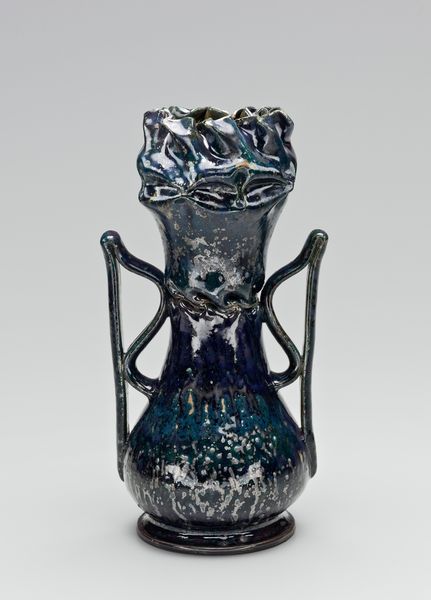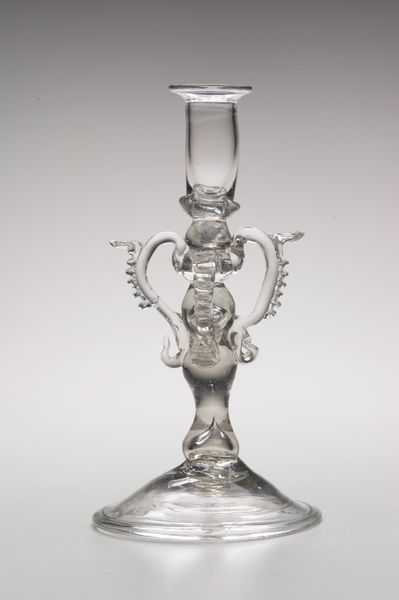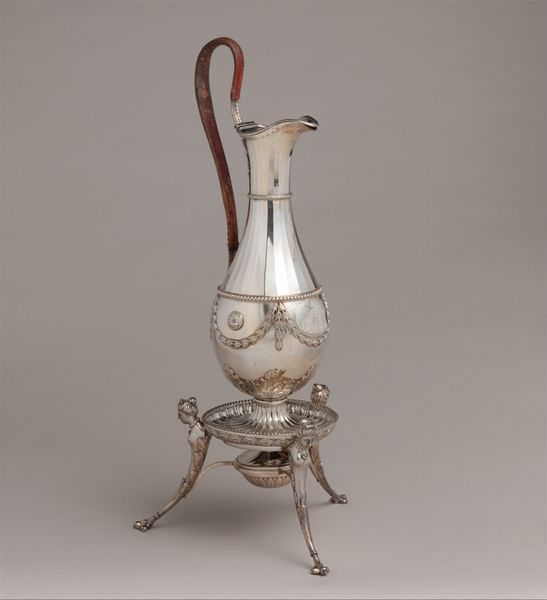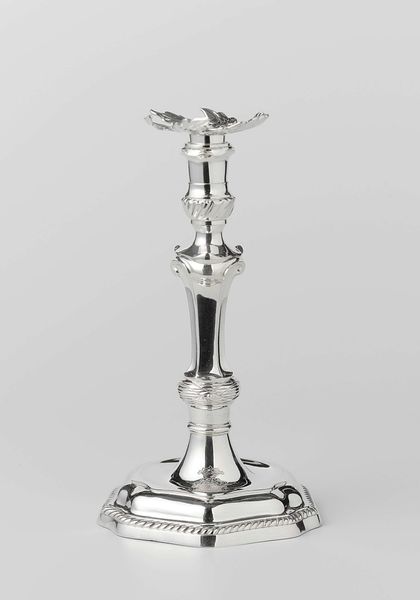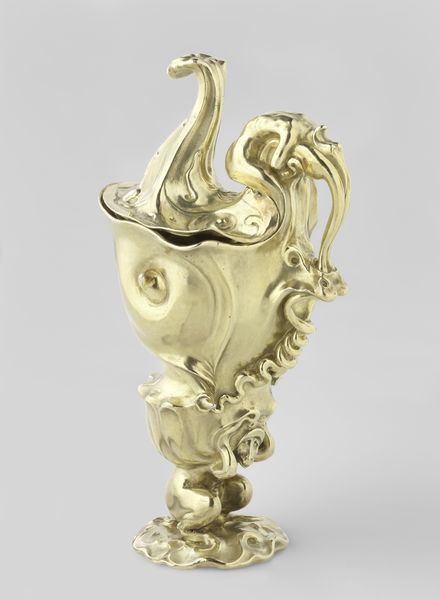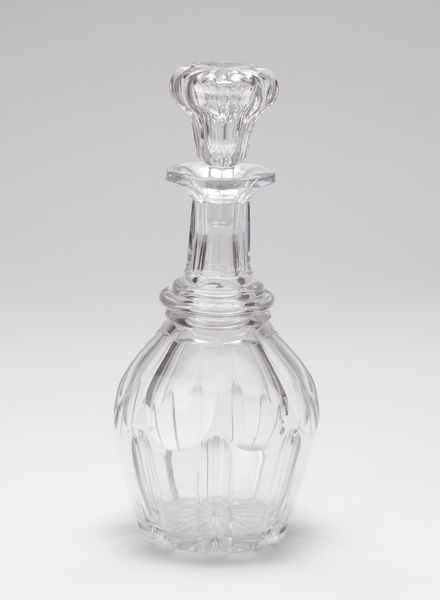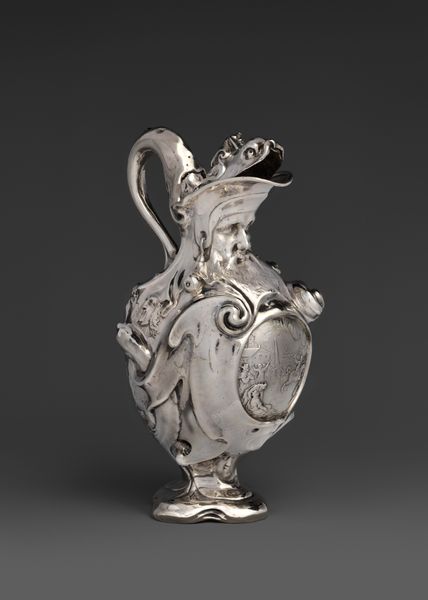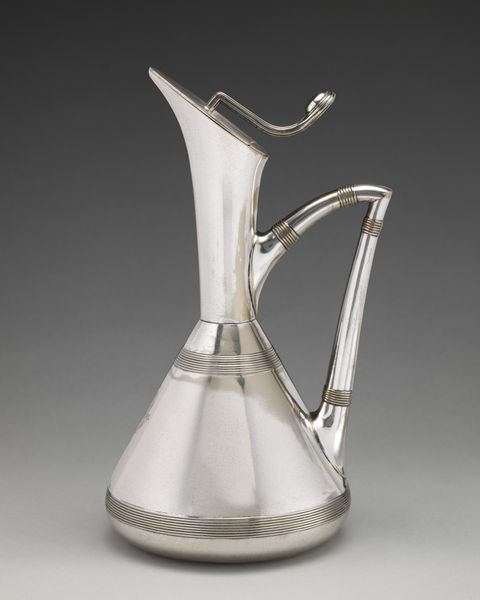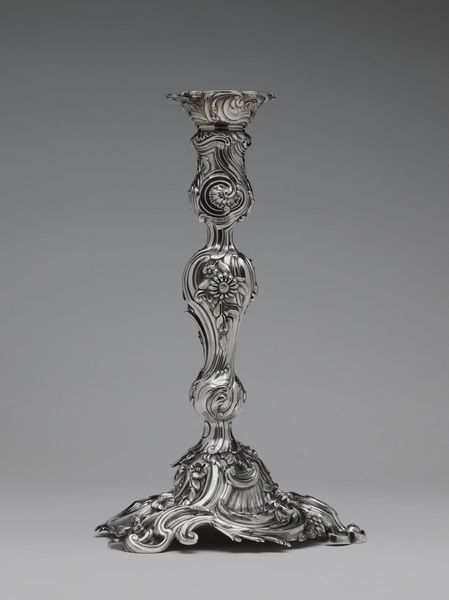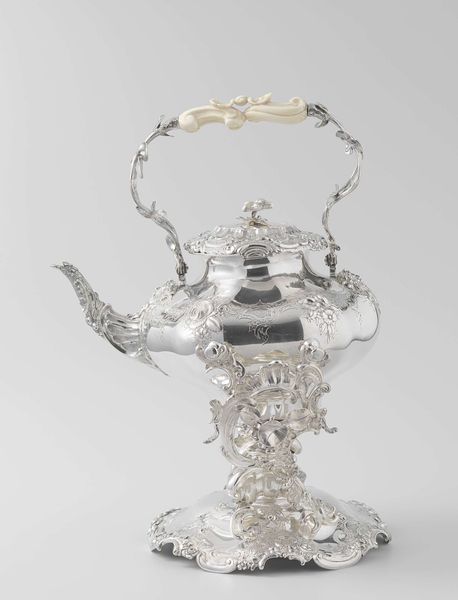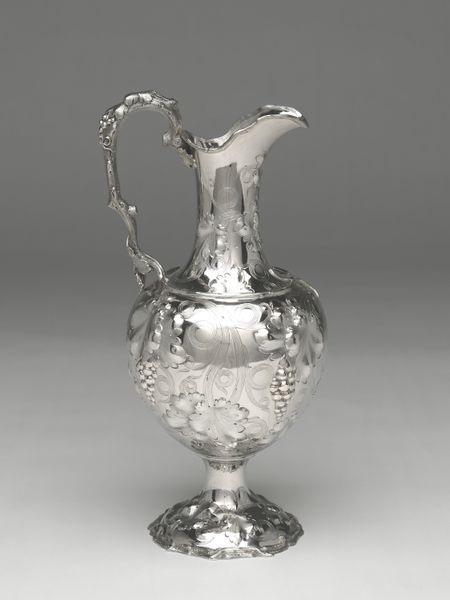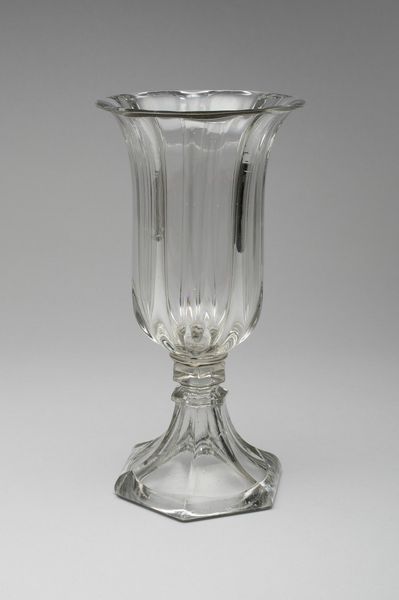
metal, glass, engraving
#
art-nouveau
#
metal
#
glass
#
decorative-art
#
engraving
Dimensions: 12 5/8 x 6 1/2 x 6in. (32.1 x 16.5 x 15.2cm)
Copyright: Public Domain
Curator: This striking object is a decanter, created around 1900 by William B. Durgin. It’s a beautiful example of Art Nouveau craftsmanship combining glass and metal, residing now in the Minneapolis Institute of Art. Editor: The first thing that strikes me is its shimmering elegance. The way the light plays on the glass, the intricate detailing of the silver—it’s quite mesmerizing. Curator: Absolutely. Now, let’s consider the cultural context. Around 1900, Art Nouveau was challenging the dominance of industrial production, re-embracing handcrafted items like this one. Owning such a decanter would’ve been a statement about embracing beauty and luxury. This would most likely have been a wealthy person or household that owned this. Editor: And look at how the floral motifs wrap around the body and culminate in that dramatic metalwork on the spout and handle. It’s a beautiful articulation of the form, that metallic vine. A symbolic capturing of the beauty and freedom of nature itself. Curator: Precisely. The Art Nouveau movement was heavily influenced by nature and an embrace of the decorative and ornate, partly as a rejection of earlier Victorian ideals and emerging concepts of consumerism, even commodification. It’s also worthwhile thinking about the social rituals around its intended use – think about social classes, luxury consumption and the ways access to such material wealth, then and now, represents power dynamics. Editor: I agree entirely. There's also a very clear semiotic code operating. This decanter goes beyond simple utility; its very design suggests refinement and ceremony. It’s the symbolic content that turns this into a remarkable object, loaded with meaning. Curator: True. It’s an intersection of form, function, class, and cultural aspirations, capturing a moment when societal norms were challenged in the era leading to the first World War. The decanter’s a reflection of how artistic trends can offer resistance. Editor: Yes. The way the artist handled those tensions between functionality and artistic ambition is quite interesting, and beautiful to see over a century later. It asks a simple question: how can functionality be made so wonderfully emotive?
Comments
No comments
Be the first to comment and join the conversation on the ultimate creative platform.
